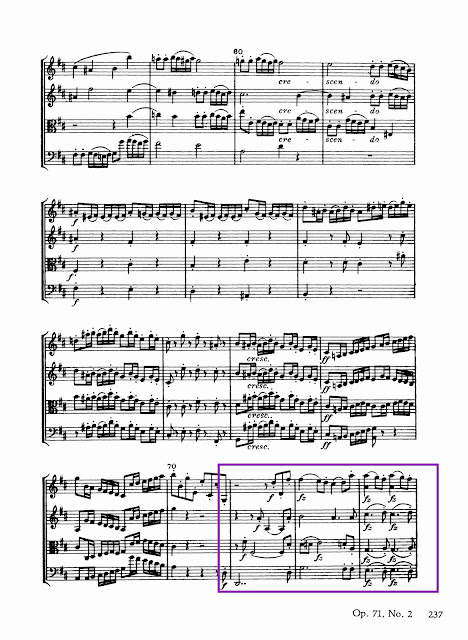CCCXXXV. HAYDN, Franz Joseph (1732-1809)
Goethe wrote:
"For the audience, a quartet performance is like listening to four rational people conversing among themselves."
So what are these four South Korean ladies saying to us in the universal language of music?
First of all, whatever it is -- it is intimate. They are sharing their abilities -- honed after many hours, weeks, years, decades of practicing and perfecting -- to transmit Haydn's intentions to your ears and brain and whatever other sensory apparatus might be involved.
Secondly, they are conveying something profound and beautiful beyond the ordinary -- through four-part harmony and counterpoint -- that is unique to this combination of instruments. [Listen to the Mendelssohn Octet for example -- a work for double string quartet -- see Post LXI; it's a completely different experience listening to eight instead of four!]
And thirdly, Haydn -- who is rightly credited with making the SQ a form which so many composers, even to the present day, consider the ultimate compositional format -- had a way of injecting wit and humor into his music, especially these works, of which he composed sixty-eight ...
**
First Movement
A four-bar Adagio precedes the Allegro. Notice the 16th-notes in the top three instruments, which move towards the dominant A7 chord, which suddenly bursts into the tonic:
The development takes the diving octaves-motif and reduces the intervals -- to a 7th, a 6th -- before he returns to the original idea, and then re-introduces the octave leaps in a series of exotic chords which finally reach the tonic, D Major. This is both profound and witty.
and the motif brings the movement to a close:
Second Movement
What an effect Haydn achieves by changing just one note -- the F-Sharp to an F-Natural!
Haydn makes a daring leap into an unrelated key center: C Major:
and ends on the 16th-note triplets he had earlier introduced:
Third Movement
A typical tightly-knit short minuet & trio. The trio features chromatic tones resolving in both directions.
A change to the parallel minor is welcome, and then Papa brings it all home in unsion:
















No comments:
Post a Comment